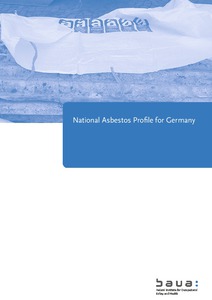National asbestos profile for Germany
"At the Fifth Ministerial Conference on Environment and Health held in Parma, Italy, in 2010 the Member States of the WHO European Region adopted a declaration to develop national programmes for the elimination of asbestos-related diseases (ARDs) by 2015 in collaboration with WHO and the Intern...
| Institution: | ETUI-European Trade Union Institute |
|---|---|
| Format: | TEXT |
| Language: | English |
| Published: |
Dortmund
2014
BAuA |
| Subjects: | |
| Online Access: | https://www.labourline.org/KENTIKA-19104369124919225419-National-asbestos-profile-for-.htm |
| Summary: | "At the Fifth Ministerial Conference on Environment and Health held in Parma, Italy, in 2010 the Member States of the WHO European Region adopted a declaration to develop national programmes for the elimination of asbestos-related diseases (ARDs) by 2015 in collaboration with WHO and the International Labour Organization (ILO). The National Asbestos Profile is an instrument to provide information to the member states. It defines the baseline situation with regards to the elimination of asbestos-related diseases, consumption of the various types of asbestos, populations at risk from current and past exposures. It also determinates the system for inspection and enforcement of exposure limits and the asbestos ban, and the social and economic burden of asbestos-related diseases. The aim of the National Profile is to work as a starting point for development and enforcement of national programs for the elimina-tion of asbestos-related diseases. It shall serve as an instrument to measure the pro-gress made towards the objectives and targets set by the national programs.
The National Profile for Germany follows the reporting structure which was proposed by the WHO for the National Profiles. A comprehensive number of data sources are used. The reporting on asbestos-related diseases is based on data made available by the German Statutory Accident Insurance (recognized cases, new cases, fatalities), by the cause of death statistics of the German Federal Statistical Office and by the German Centre for Cancer Registry Data at the Robert-Koch Institute (RKI). Cost data made available by German Statutory Accident Insurance (DGUV) are used to illustrate the economic burden of asbestos-related diseases. In order to quantify the burden of asbestos-related diseases for society the measurement concept of Disability Adjusted Life Years (DALY) was applied. The DALY measures the years of life lost by asbestos-related diseases in relation to the life expectancy for a specific age group. In order to do this a special evaluation of the occupational disease statistics was conducted by DGUV.
The institution for central registration and medical care agency (GVS) founded by the institutions for statutory accident insurance provides data on registered employees for medical examinations, because of asbestos exposure and registered enterprises currently involved in working tasks with asbestos-containing materials. Data on asbestos containing building materials is derived by evaluation of the hazardous waste disposal statistics of the Federal Statistical Office.
The National Profile differentiates between West-Germany and the former German Democratic Republic (GDR) before German Unification for the case that appropriate figures on asbestos-related occupational diseases and on asbestos consumption and use were available." |
|---|---|
| Physical Description: | 70 p. Paper Digital |

